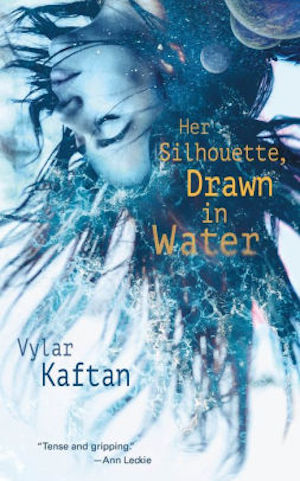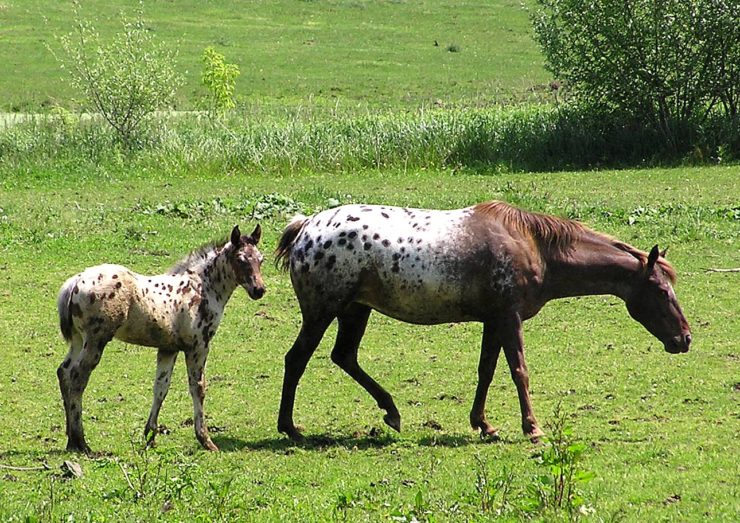Recently I’ve been writing and thinking about horse breeding—as we do in the spring in the Northern Hemisphere—and pondering the issue of breeds. On the one hand, too limited a gene pool is a problem that can destroy a species. On the other, smart breeding within the parameters of a breed standard can both create and preserve a particular set of traits that humans find desirable. When that happens, that subset of the species has a decent chance of surviving.
Some breeds are quite restricted in what they will allow. The Thoroughbred studbook was closed long ago and no outcrosses are allowed within the registry. The Friesian, which breeds specifically and exclusively for a black coat, is quite restrictive in its requirements for breeding stock. The Arabian, which is happy to register crossbreds as such, allows no percentage, however tiny, of outcross breeding for registration as a purebred.
Why do this? Prestige, for one thing. An ideal of “purity” which shares an ideology with human eugenics. Marketing—if you can label something a “purebred special rare whatever,” it sells for more money than the generic model.
But past that, when you look at a breed, you’re looking at a specific and identifiable set of characteristics. You know what you’re getting, and when you breed within the registry, you can fairly easily predict the results. Prior to DNA sequencing, breeds were a way of raising the chances that if you wanted a particular look, function, way of going, whatever, you could reliably get it.
Breeding for physical type is challenging to start with, but if you add more specific characteristics, things can get complicated. Selecting for particular color patterns is much easier now with DNA testing, but back in the days of lower tech, breeders did some seriously educated guessing.
Which is all by way of circling around to talking about one of my favorite breeds and color complexes, the Appaloosa. I confess I was going to start with the most-probably-oldest of the breeds, the Arabian, but a chance encounter on Prime Video motivated me to start here instead.
The Appaloosa is a North American breed originally cultivated by one particular tribe, the Nez Perce. In the first decade of the nineteenth century, Meriwether Lewis, of the Lewis and Clark expedition, wrote about seeing large numbers of spotted horses in predominantly solid-colored herds in the region that is now Washington, Oregon, and Idaho. By the late nineteenth century, white colonizers had seized the horses from the defeated tribe and systematically set out to destroy them, either by slaughtering them or by outcrossing them to other breeds until their original characteristics, including their color patterns, were lost.
The twentieth century saw a restoration of the breed, the establishment of a registry by mostly white breeders, and near the end of the century, a concerted effort by the Nez Perce themselves to recreate the original type. Breeders went in several directions, some of them contentious.
Some wanted to create basically a spotted Quarter Horse, and emphasized Quarter Horse-like physical type rather than the famous coloration (though there was still a requirement for the less visually dramatic characteristics of striped hooves, mottled skin, and visible white eye sclera). Others argued, sometimes heatedly, that an Appaloosa by definition should have spots. And a few tried to find the original, unreconstituted stock (with spots included), looking for a “pure” Nez Perce strain and calling it the Foundation Appaloosa.
As for where the spots originally came from, the general consensus was that a few of the Spanish horses that escaped into the wild during the conquest of the Americas carried the leopard gene, as it’s called. The Nez Perce loved the coloration, supposedly, and bred for it, and so created their signature breed.
It’s true that spotted horses were present in Europe—according to cave paintings and archaeological evidence, the gene predates domestication by quite a few millennia. There’s evidence of leopard-spotted horses in medieval and Renaissance art, and to this day there is a breed of spotted baroque horse in Denmark, the Knabstrupper (now in fact being crossed with American Appaloosas). Horses with this coat pattern were known farther east as well, all the way to China and Japan, but the horse we know as the Appaloosa was believed to have been descended from western stock.
And that’s where my late-night ramble around Prime Video presented a different scenario. The 2015 documentary, True Appaloosa: Quest for the Secret Horse is the story of Scott Engstrom, a breeder of Foundation Appaloosas who has always maintained that there is no way the Nez Perce could have had thousands of horses in the time of Lewis and Clark if all of their stock was descended from escaped Spanish imports. Horses just don’t breed fast enough. She believes that there were already spotted horses in the Pacific Northwest at the time of the European invasions, and that they had come, somehow, not from Europe but from Asia.
In true dramatic style, she happened to be watching television one night on her ranch in New Zealand, and happened to see an episode of Conor Woods’ Around the World in 80 Trades, in which he was trading horses in Kyrgyzstan—and one of those horses looked like a quite boldly patterned blanket Appaloosa. Scott got in touch with Conor and persuaded him to take her to Kyrgyzstan and try to find this horse, and once she found him, to analyze his DNA and find out if he was related to her Appaloosas.
It’s a very enjoyable film, in which a nearly 70-year-old woman with an interesting personal history ventures into the deeps of the old Soviet empire in search of one particular horse. SPOILER: She never does find him. What she does find is a secret herd of Appaloosa-spotted horses called, in that part of the world, Altai horses. Like the Nez Perce, the Kyrgyz were conquered by Russians who seized their horses, broke up their herds, and forced them to dilute or dissolve the bloodlines and the color patterns by breeding to Russian stock. This one remote valley however managed to preserve the old lines, and the resemblance to the Foundation Appaloosa is striking.
Engstrom, with Woods and a breeder from Kyrgyzstan named Munarbek, managed to collect DNA from the herd and have it tested at Texas A&M in the US. The geneticist who ran the tests determined that the horses were indeed related to Engstrom’s animals, enough that they seem to support her theory of Asian rather than Spanish origin. Which, if it is indeed true, not only rewrites the history of the Appaloosa breed but also that of the horse in the Americas.
Buy the Book


Her Silhouette, Drawn in Water
There is no archaeological evidence (as far as we know) to support the theory. If horses did come in from Asia, they might have come with traders, but it’s a long way to sail across the Pacific from China or Japan. They could have come by the northern route through Siberia, but when and why? If they came across the land bridge, that puts them here close to the time when native horses went extinct—but if they’ve been here that long, why didn’t they spread beyond the Pacific Northwest and populate the Plains? If they came around the time of Columbus, again, why? What would motivate traders to transport horses that far when it would make so much more sense to travel by boat or dogsled (dogs are much easier and cheaper to keep, especially in the far north)? The Conquistadores came to conquer, and brought their horses as weapons of war. What would motivate traders to do the same?
It’s intriguing in any case. Somehow, thousands of miles and an ocean apart, the Nez Perce and the people of Kyrgyzstan managed to breed horses with very similar genetics. I hope there are more studies in the works to trace the connections and find out how and when they happened.
Meanwhile, the Appaloosa breed is thriving in North America and various parts of the Western world, and there’s new interest in the Altai horses in Kyrgyzstan. The world’s supply of lovely spotty horses, at least for now, seems secure.
Top image by Anne Norman, licensed under the Creative Commons Attribution 2.0 Generic license, via WikiMedia Commons.
Judith Tarr is a lifelong horse person. She supports her habit by writing works of fantasy and science fiction as well as historical novels, many of which have been published as ebooks by Book View Cafe. She’s written a primer for writers who want to write about horses: Writing Horses: The Fine Art of Getting It Right. Her most recent novel, Dragons in the Earth, features a herd of magical horses, and her space opera, Forgotten Suns, features both terrestrial horses and an alien horselike species (and space whales!). She lives near Tucson, Arizona with a herd of Lipizzans, a clowder of cats, and a blue-eyed dog.










